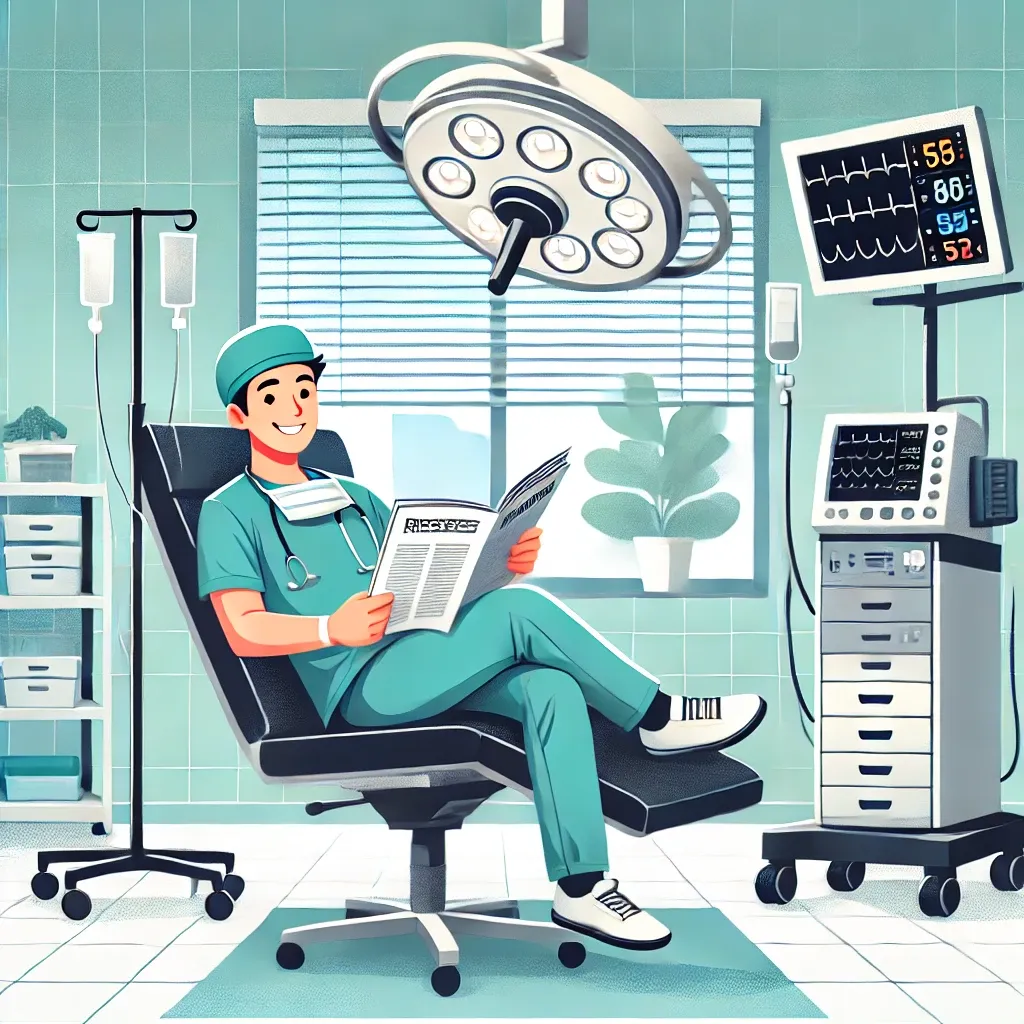Effect of nebulized dexmedetomidine on gag reflex suppression and sedation quality in pediatric patients undergoing gastrointestinal endoscopy: a randomized controlled trial
Nebulized precedex significantly decreased gag and cough reflexes, anesthetic requirements, and enhanced endoscopist satisfaction.
The Takeaway
Nebulized precedex significantly decreased gag and cough reflexes, anesthetic requirements, and enhanced endoscopist satisfaction.
Study Design
- 60 patients in each group
- Patients aged 2–17 years, weighing ≥ 10 kg, ASA I or II, scheduled for diagnostic upper gastrointestinal endoscopy
- Exclusion criteria: allergies to the study drugs; ASA class ≥ III; psychiatric or psychological disorders, neurological conditions or intellectual disability, asthma, a history of upper respiratory tract infection in the past 4 weeks, heart conditions, obesity (body mass index ≥ 35 kg/m2), weight < 10 kg
- Primary outcome: severity of the gag reflex after the insertion of the endoscope
Abstract
Background: Pediatric patients undergoing upper gastrointestinal (GI) interventions frequently require sedation and analgesia due to the challenges associated with endoscopic probe placement, particularly the gag reflex. This study investigates the effects of nebulized dexmedetomidine as a premedication on the gag reflex in pediatric patients undergoing gastrointestinal endoscopy.
Methods: We conducted a single-center, prospective, randomized controlled trial at the Pediatric Gastroenterology Clinic of Ondokuz Mayis University School of Medicine from January to April 2024. Participants aged 2-17 years scheduled for upper GI endoscopy were randomized to receive nebulized dexmedetomidine (2 µg /kg) or no premedication. The primary outcome measured was the severity of the gag reflex during the procedure. Secondary outcomes included cough incidence, separation anxiety, postoperative agitation, and endoscopist satisfaction. Statistical analyses were performed with significance set at p < 0.050.
Results: A total of 120 patients were analyzed. The dexmedetomidine group demonstrated a significantly lower incidence of gag reflex (88.3% with no gag reflex vs. 30% in the control group, p < 0.001) and coughing (95% vs. 55%, p < 0.001). Separation anxiety scores were also significantly lower in the dexmedetomidine group (p < 0.005). Additionally, the need for additional anesthetics was reduced, and endoscopist satisfaction was significantly higher. No significant differences in complications were observed between the two groups (p = 0.600).
Conclusions: Nebulized dexmedetomidine is a safe and effective premedication for pediatric patients undergoing endoscopic procedures, significantly reducing gag and cough reflexes, decreasing anesthetic requirements, and enhancing endoscopist satisfaction. This approach improves the comfort and safety of pediatric endoscopy procedures.
Excerpts
One of the most significant challenges encountered during endoscopic probe placement is the development of the gag reflex. In these patients, discomfort can lead to increased secretion, laryngospasms, pain, and undesirable hemodynamic changes.
Effective premedication can reduce preprocedural anxiety, making the intervention less traumatic for the child and more comfortable for the practitioner
Dexmedetomidine hydrochloride (Precedex 100 µg/mL) was administered using an electric compressor nebulizer (Eco Smart; Saify Healthcare, Medi Devices, India) at a dose of 2 µg/kg (maximum 100 µg), diluted with isotonic solution to a volume of 5 mL. The drugs were administered by the anesthesiologist at least 20 min before anesthesia induction
The incidence of the gag reflex was significantly different between the groups (p < 0.001). In the dexmedetomidine group, the reflex was lost in 53 children (88.3%) and was mild in seven (11.7%), while moderate reflexes were not recorded. In contrast, in the control group, the gag reflex was depressed in 18 children (30%), was mild in 34 (56.7%), and moderate in 8 (13.3%).
The incidence of coughing was significantly lower in the dexmedetomidine group than in the control group (p < 0.001). Furthermore, episodes of coughing were absent in 57 (95%) and 33 (55%) children in the dexmedetomidine and control groups, respectively. Mild coughing was observed in 3 children (5%) in the dexmedetomidine group and in 22 (36.7%) in the control group. Moderate coughing was observed only in the control group (n = 5; 8.3%).
Movements of the extremities against the placement of the endoscopy probe were significantly less common in the dexmedetomidine group than in the control group (p < 0.001)
Nebulized dexmedetomidine offers distinct advantages over the intranasal and oral routes owing to its rapid and effective absorption. Its bioavailability through the nasal and buccal mucosa is approximately 65% and 82%, respectively, supporting its efficacy as a sedative agent
although oral administration can pose challenges in uncooperative children, the nebulized form, applied as an atomized spray, minimizes drug loss by effectively covering the mucosal surface, thereby enhancing clinical efficacy
although the mean age of the patients was 11–12 years, higher than that in similar studies, we observed that children in the younger age group who received nebulized dexmedetomidine separated from their parents more easily, despite the lower dose.
the optimal dose for children remains undetermined, and further studies are needed to evaluate the age-specific dosing of nebulized dexmedetomidine across different pediatric groups.
the recovery times in the nebulized dexmedetomidine and control groups were significantly shorter than those in the intravenous dexmedetomidine group. We attribute this finding to the sedative effects of the nebulized dexmedetomidine, which reduced the need for additional anesthetic agents during the procedure.
Citation
Turunc E, Ustun YB, Bilgin S, Kaya C, Koksal E, Dost B. Effect of nebulized dexmedetomidine on gag reflex suppression and sedation quality in pediatric patients undergoing gastrointestinal endoscopy: a randomized controlled trial. BMC Anesthesiol. 2025 May 3;25(1):227. doi: 10.1186/s12871-025-03106-x. PMID: 40319232; PMCID: PMC12048968.

